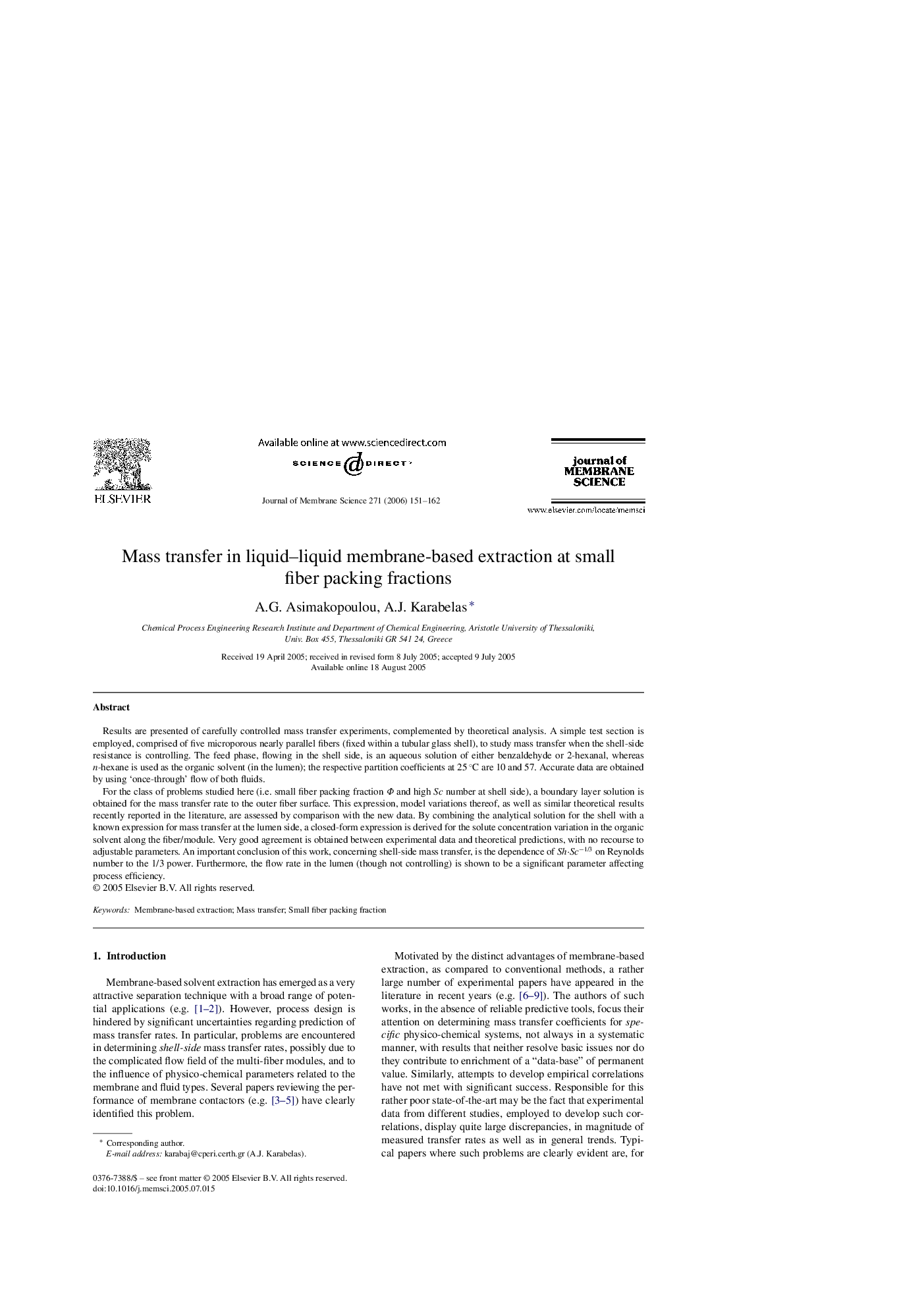| Article ID | Journal | Published Year | Pages | File Type |
|---|---|---|---|---|
| 639510 | Journal of Membrane Science | 2006 | 12 Pages |
Results are presented of carefully controlled mass transfer experiments, complemented by theoretical analysis. A simple test section is employed, comprised of five microporous nearly parallel fibers (fixed within a tubular glass shell), to study mass transfer when the shell-side resistance is controlling. The feed phase, flowing in the shell side, is an aqueous solution of either benzaldehyde or 2-hexanal, whereas n-hexane is used as the organic solvent (in the lumen); the respective partition coefficients at 25 °C are 10 and 57. Accurate data are obtained by using ‘once-through’ flow of both fluids.For the class of problems studied here (i.e. small fiber packing fraction Φ and high Sc number at shell side), a boundary layer solution is obtained for the mass transfer rate to the outer fiber surface. This expression, model variations thereof, as well as similar theoretical results recently reported in the literature, are assessed by comparison with the new data. By combining the analytical solution for the shell with a known expression for mass transfer at the lumen side, a closed-form expression is derived for the solute concentration variation in the organic solvent along the fiber/module. Very good agreement is obtained between experimental data and theoretical predictions, with no recourse to adjustable parameters. An important conclusion of this work, concerning shell-side mass transfer, is the dependence of Sh·Sc−1/3 on Reynolds number to the 1/3 power. Furthermore, the flow rate in the lumen (though not controlling) is shown to be a significant parameter affecting process efficiency.
